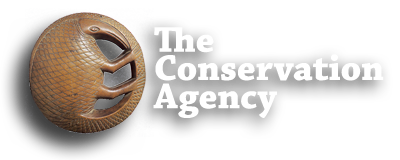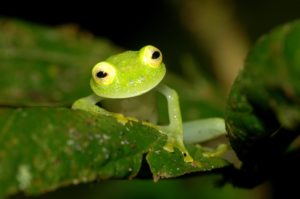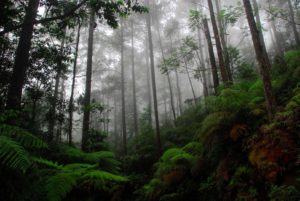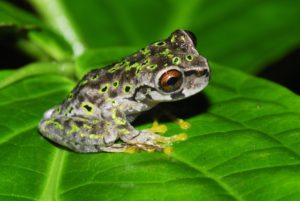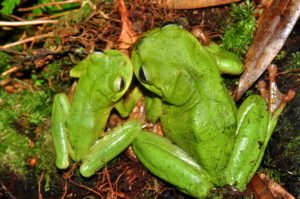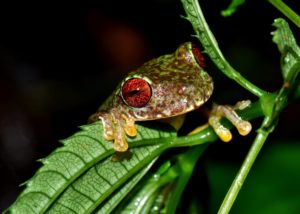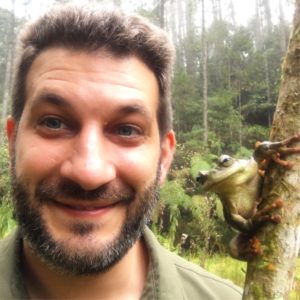The Honduras Amphibian Rescue and Conservation Center
HARCC’s rescue efforts will reduce both short and long-term extinction threats to three species of endangered and critically endangered frogs in CNP, including: the Exquisite Spike-thumb Frog (Plectrohyla exquisita), the Cusuco Spike-thumb Frog (Plectrohyla dasypus), and the Mossy Red-eyed Frog (Duellmanohyla soralia).
To prevent extinction and help these species persist in the wild, HARCC’s main objectives are:
1) A head-start program where we collect young frogs from CNP before they die from chytrid, manage their chytrid infections in a controlled environment at our biosecure research facility, and then reintroduce them back into CNP as stronger healthy adult frogs.
HARCC frog rescue laboratories are located at Lancetilla Botanical Garden & Research Institute in Tela, Honduras. These laboratories have been constructed inside two 20-foot ocean shipping containers, where animals can be kept safe from disease and protected from external threats. We completed construction of facilities in 2018 and are now seeking additional sponsorship to support operations and employment of Honduran amphibian technicians. We expect to hold our grand opening in 2019.
Video Links:
- Hope in the Midst of Chytrid
- Meet These Frogs Before They Go Extinct – finalist for the Jackson Hole Science Media Awards
Jonathan Kolby, Ph.D., is the Project Director at HARCC and Staff Herpetologist at The Conservation Agency. Donations for this critical project are urgently needed.
For more info check out: the HARCC website and subscribe to HARCC’s Twitter, FaceBook, and Instagram feeds.
